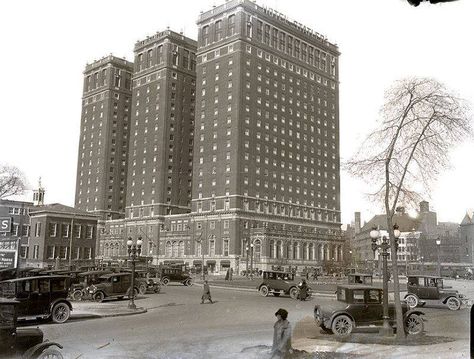
January 28, 1901 - April 10, 1945

Galifreda Alice Petre Nepean was born on January 28, 1901 in Kingsbridge, England. Her parents, Algernon and Blanche (nee Kennard) Nepean resided in Plymouth, England. Galifreda was married to Alexander Clark, a clerk, deceased, of Devon, England. They had one daughter, Miss Geraldine Maybelle Clark, who resided in Toronto, born April 29, 1921. Geraldine became Mr. Howard Hadlow. She may have gone by the name Mabel.
Galifreda took "Domestic Science" from 1913 to 1915 at East Alington, Plymouth, England. She was a waitress with WAAC, England, as a Private between 1917-1918, but was dismissed for being under age.
Galifreda was a cook as noted on her attestation papers. She worked at the Statler Hotel in Buffalo, New York from 1931-1933, then for Mrs. F. N. Black for the next three years until Mrs. Black's death. She worked for Mrs. Christine Clark of Toronto from 1937-1938, then for Mrs. Lyon, of Toronto until 1939, then for Mrs. Clarkson, each time to improve her position, until Galifreda enlisted at Toronto in 1941.
She listed swimming, badminton, and tennis as sports she engaged in. Her first choice with the CWAAF was Senior Cook, her second choice: Cook, possibly as instructor. She was assessed as a 'good' type and was neat.
She stood 5' tall, weighing 113 pounds, having a dark complexion, blue eyes and brown hair. She had had Scarlet Fever, measles, mumps, a hernia and appendicitis, plus abdominal surgery when she was 15.
At the RCAF School of Cookery, February 1942: "Ranked 13th in class of 19. 'Somewhat' set in her ways and slow at picking up new ideas. Not suitable as instructor. Average assessment. 70.1%." She was taken on strength as cook and then later as hospital chef. She started with the rank of AW1, then LAW by July 1, 1942, A/Cpl March 1943 with a posting in Toronto with station hospital duty at Christie Street Hospital.
Cpl Clark was admitted to hospital: No. 6 Manning Depot: November 1, 1941: bronchitis; Toronto: April 7, 1942: influenza; Christie Street Hospital: April 17, 1942: Meningismus; No. 6 MD: September 2, 1942: Conversion hysteria with paralysis; December 30, 1942: Pharyngitis; TTS: June 12, 1943: Bowel obstruction; September 20, 1943: Severe secondary anaemia; January 26, 1944: Exhaustion, neurasthenia; No. 2 KTS: February 18, 1944: infected toe; TTS: February 22, 1944: Biliary obstruction; Christie Street Hospital: April 19, 1944: peptic ulcer, benign stricture common bile duct requiring an operation; TTS: May 23, 1944 and June 5, 1944: Acute abdominal distress, with increasing jaundice.
In January 1944, she was granted five days leave for New Year's.
"In June 1943, was admitted with diagnosis of bowel obstruction. Operation at this time showed multiple adhesions. No incidents until October 1943 when she was admitted with severe secondary anaemia and history of bleeding by bowel. Extensive x-rays could not determine the source. February 1944: Severe epigastric pain with vomiting. Transferred to Christie Street Hospital. Operation showed multiple adhesions, stenosis of bile duct. An ostomosis was done between common duct and duodenum. Since then has had two attacks of very severe upper abdominal pain, the first in April lasting several days with light icterus, the second in June lasting 2 days. Patient had what was apparently a gastroenterostomy at the age of 15."
Cpl Clark said, "I believe that being put in charge of the dishwashing machine after my illness in September 194 and October aggravated my condition which made it necessary for another operation in March, then following my sick leave in May, I was put back again on the dishwashing machine, and it was running four men short. On May 23, 1944, I worked so hard that evening, I had to be admitted to Station Hospital with severe pain. I had no attacks on y 28 day leave and felt in much better health. I firmly believe that the doctors did all they could for me both in Toronto and St. Thomas, but I sincerely believe had I not been put to such hard work following my illness, I would have made a satisfactory recovery. At the present, I am not in fit condition to support myself." June 9, 1944
"The foregoing listing of admissions and diagonoses should in themselves present sufficient evidence for discharge action to be taken...The presence of a gastr-=o-enterostomy or gastro-colic fistula since girlhood does not help clarify the situation. It appears certain that she is going to be subject to recurring attackes of abdominal pain and will be temporarily incapacitated from time to time...I do not see how under any circumstances, she could be designated an efficient airwoman and recommend medical board ApBp with discharge to D.P. & N. H." S/L C. S. Wilson
"Has served for approximately 33 months without any entry on her Conduct Sheet. Also served in Great Britain's services in 1917 and 1918. Shoud not find it difficult to get absorbed in civil life. Is very desirous of obtaining position as hospital chef or similar to work done in army. Seems to have no desire to return to former work, as cook/housekeeper. Likely to be in hospital some time yet." Cpl Clark was discharged on September 15, 1944 because she was medically unfit for service. "Very good character. Qualified by her conduct to receive an exemplary character but ineligible becuase she has not completed three years service. Trade proficiency: Superior." She had been earning $2.10/day at discharge.
Corporal Alice Petre Clark died on April 10, 1945 and is buried in a a military plot at the Prospect Cemetery, in Toronto.
LINKS: